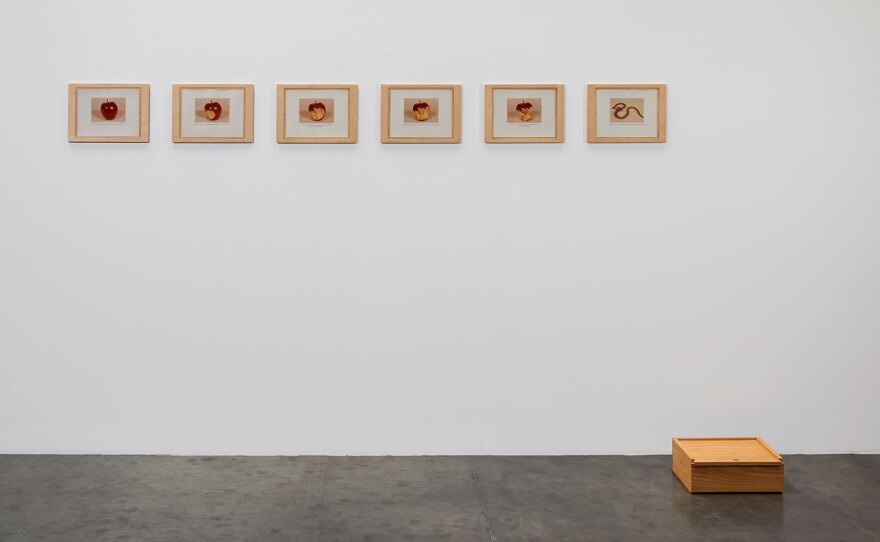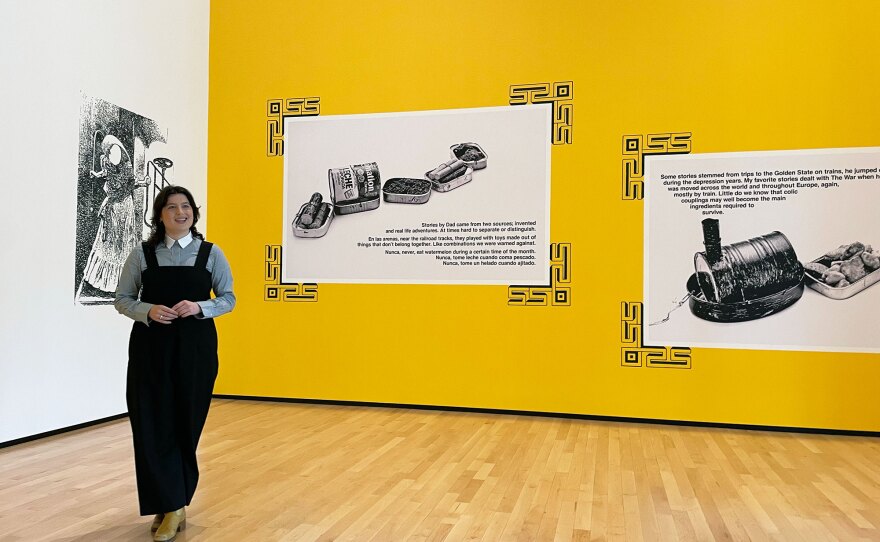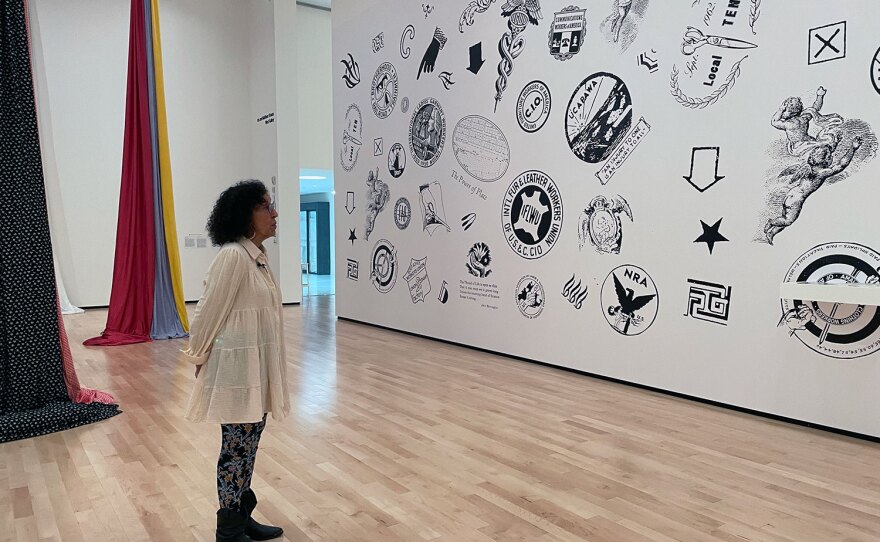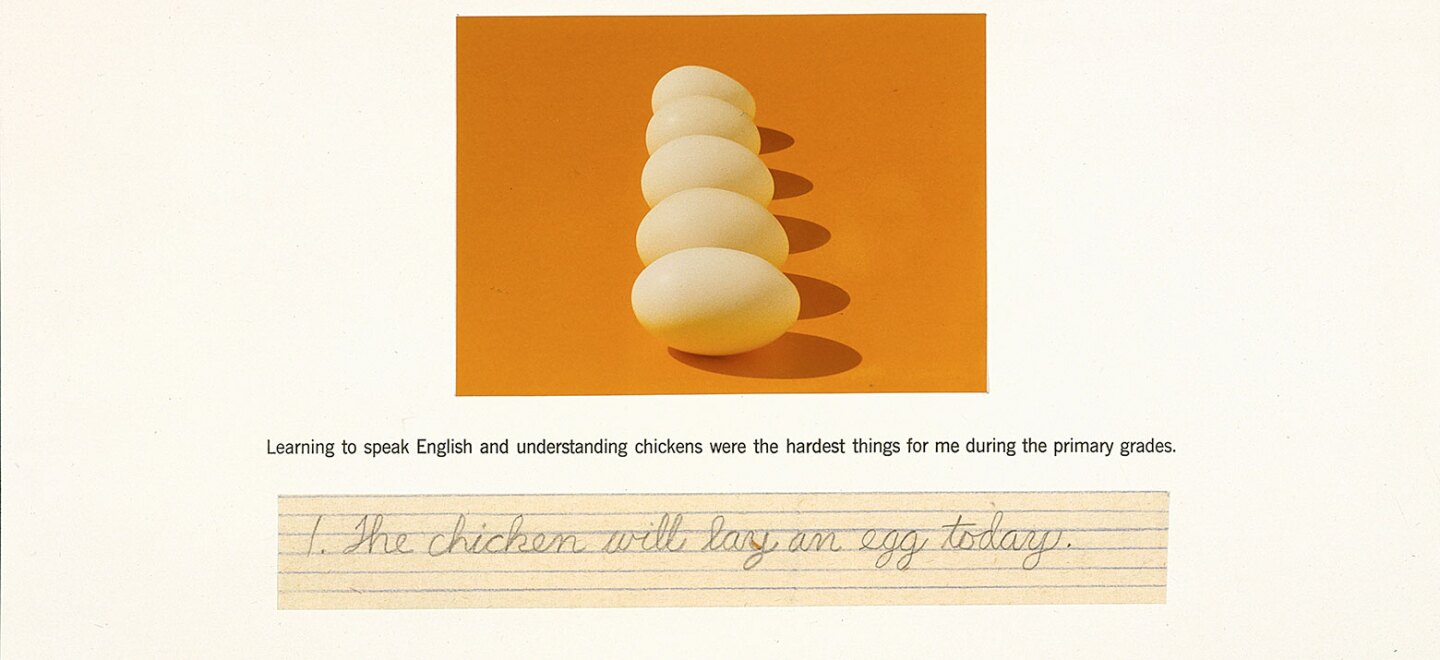At first glance, with the oversized illustrations and text, the bright colors and found objects suspended from the ceiling, it feels like stepping inside a children's book — on a massive scale.
"Breaking the Binding" at Museum of Contemporary Art San Diego in La Jolla is the first "career retrospective" exhibit for Celia Álvarado Muñoz. The 86-year-old El Paso artist is noted for her public art, whimsical artist books, and her activism through art.
Along with Álvarez Muñoz's exhibit, the museum will open the first solo museum show for Tijuana-San Diego artist Griselda Rosas. While the exhibits are separate — and on different floors of the museum — their simultaneity draws connections. Each woman is a Latina artist, representing two generations and two distinct places along the US-Mexico border, and the works both touch on childhood within a broader history.
For Álvarado Muñoz, the exhibit is a look back at a long career — and she's still driven to make art.
"Why do I keep going? Because it keeps me going," Álvarez Muñoz said. "That's what propels you to wake up in the morning and have a mission. I think for me, it has been more of a vocation."
Álvarez Muñoz's work infuses humor and private narrative into broad themes, informed by her life along the U.S.-Mexico border — as well as her background working in advertising.

She combines text and image in nearly every piece — 35 in total, seven of them major installations — playing with puns, mistranslations and mispronunciations. While her rich history of artist books like the "Enlightenment" series (1980-1985) are featured prominently, there's evident connection to her background making books in every work.
"She's an unbelievably distinct visual and verbal storyteller," said co-curator Isabel Casso.

"El Límite" (1991) is the first thing you see, with sardine-can trains adorned with printed text from childhood stories about post-war immigration routes by train. The museum commissioned this piece in 1991 for a solo exhibition of the same name — and also acquired several other of Àlvarez Muñoz's pieces.
Casso said that as an institution, they've championed Àlvarez Muñoz by exhibiting their works as well as bringing pieces into the collection. And now, it felt to the organization that she was overdue for a retrospective.
"She draws on many things from her own personal history to collective histories and I think that's one of her greatest skills. I think that that's one of her greatest skills — is her ability to have these intersections, where you're presenting a personal story, you're presenting something your grandmother told you, or was passed on to you by your father, and you have these moments where they intersect with major collective histories, whether it be the Bracero Program, a redrawing of borderlines, or even just a progression throughout the United States in terms of art exhibitions," Casso said.

"Petrocuatl" (1988) is another installation, representing a performance piece. It centers on an artifact she invented, made from a found gas mask and vivid feathers, with a full, wall-size mural of photos of Mexico City from old magazines. Set against bright fuchsia is text that's equal parts unsettling memory and absurd story.
One of Álvarez Muñoz's darker works is "Fibra y Furia" (1997). Suspended from the ceiling are 20 massive bolts of fabric and several dress forms, embellished clothes and diapers made from lace.
"It was a rebuttal against the fashion industry for the sexualization of women, from early age," Álvarez Muñoz said.
"Fibra y Furia" also touches on post-war women's labor issues, and it evolved over time to address the artist's "fury" or "furia" over the murders of young women workers linked to Juarez maquiladoras in the advent of NAFTA.

"Then we have the bridal gown over here," Álvarez Muñoz said, stepping amongst the hanging fabric and garments. The gown is embellished with a tangle of dead-looking vines, mosses and leaves, as well as shimmering plastic streamers. "And it's wicked. It's decay. It's a lot of decay."
Celia Álvarez Muñoz's "Breaking the Binding" opens at MCASD La Jolla during the Free Third Thursday event, which runs from 10 a.m to 8 p.m. on March 16. The exhibit will be on view through August 13.







